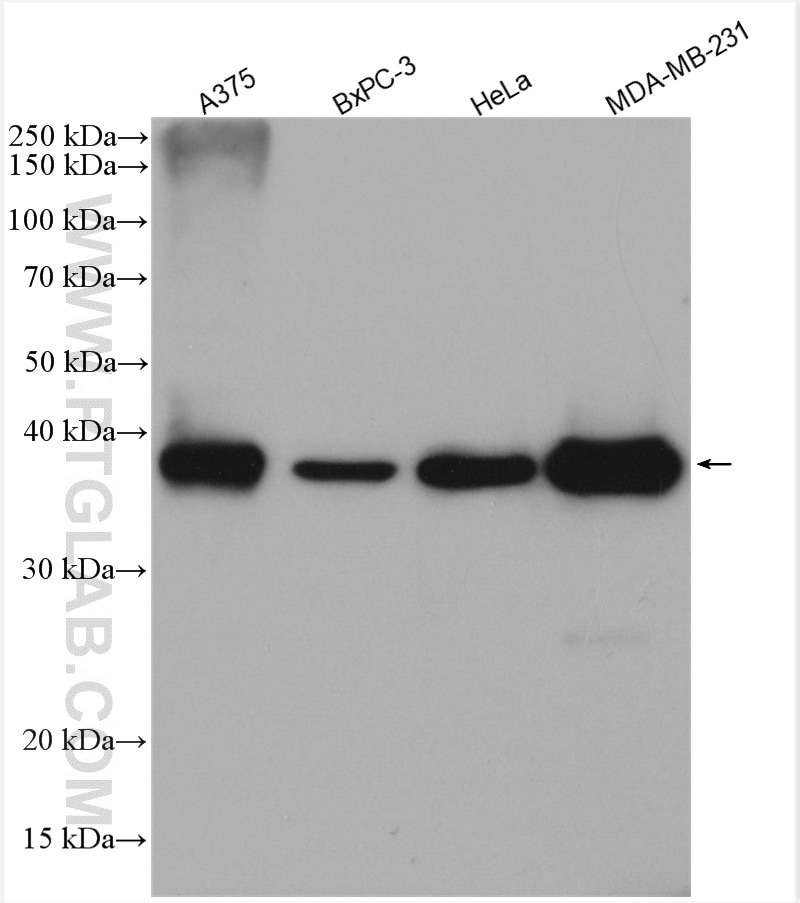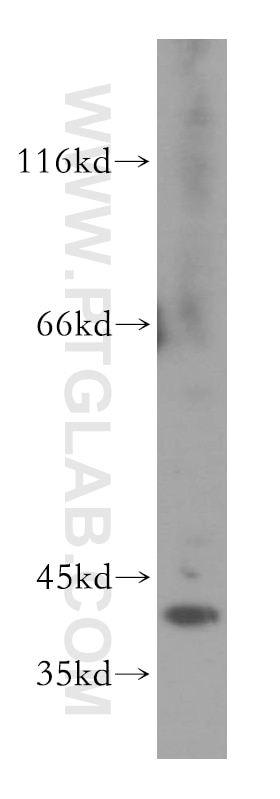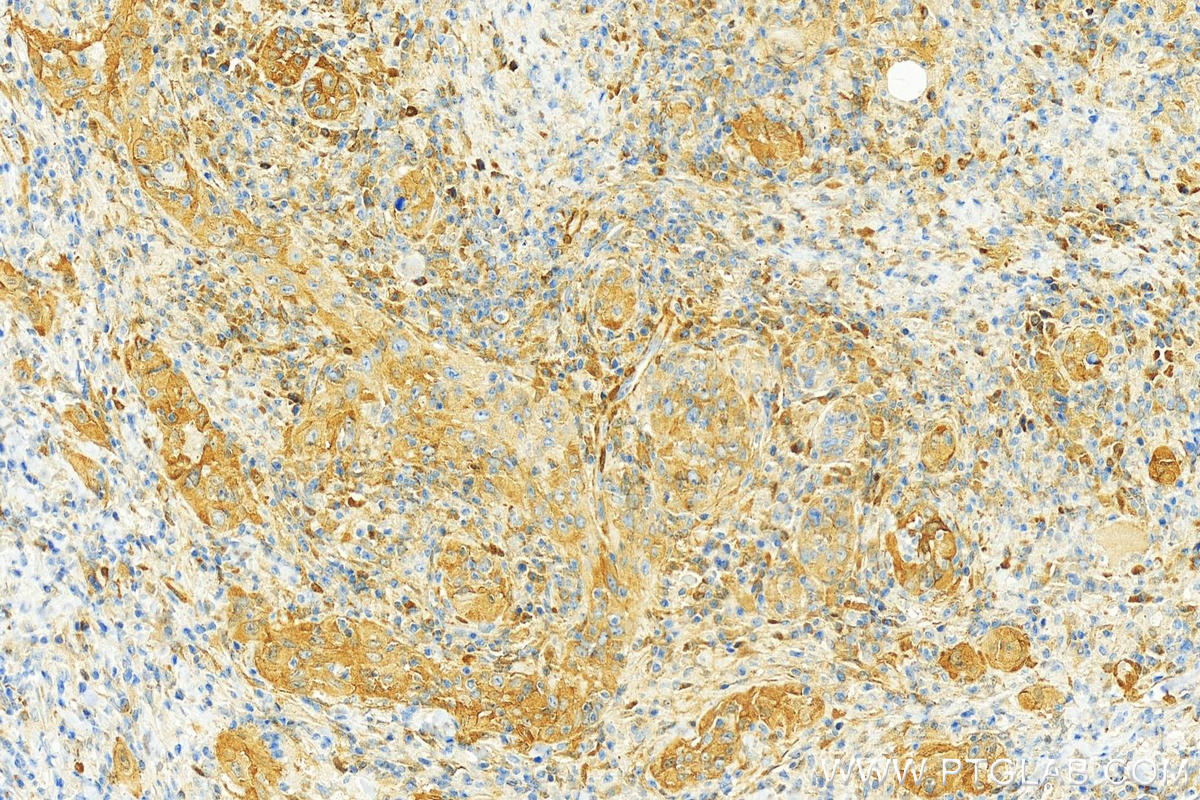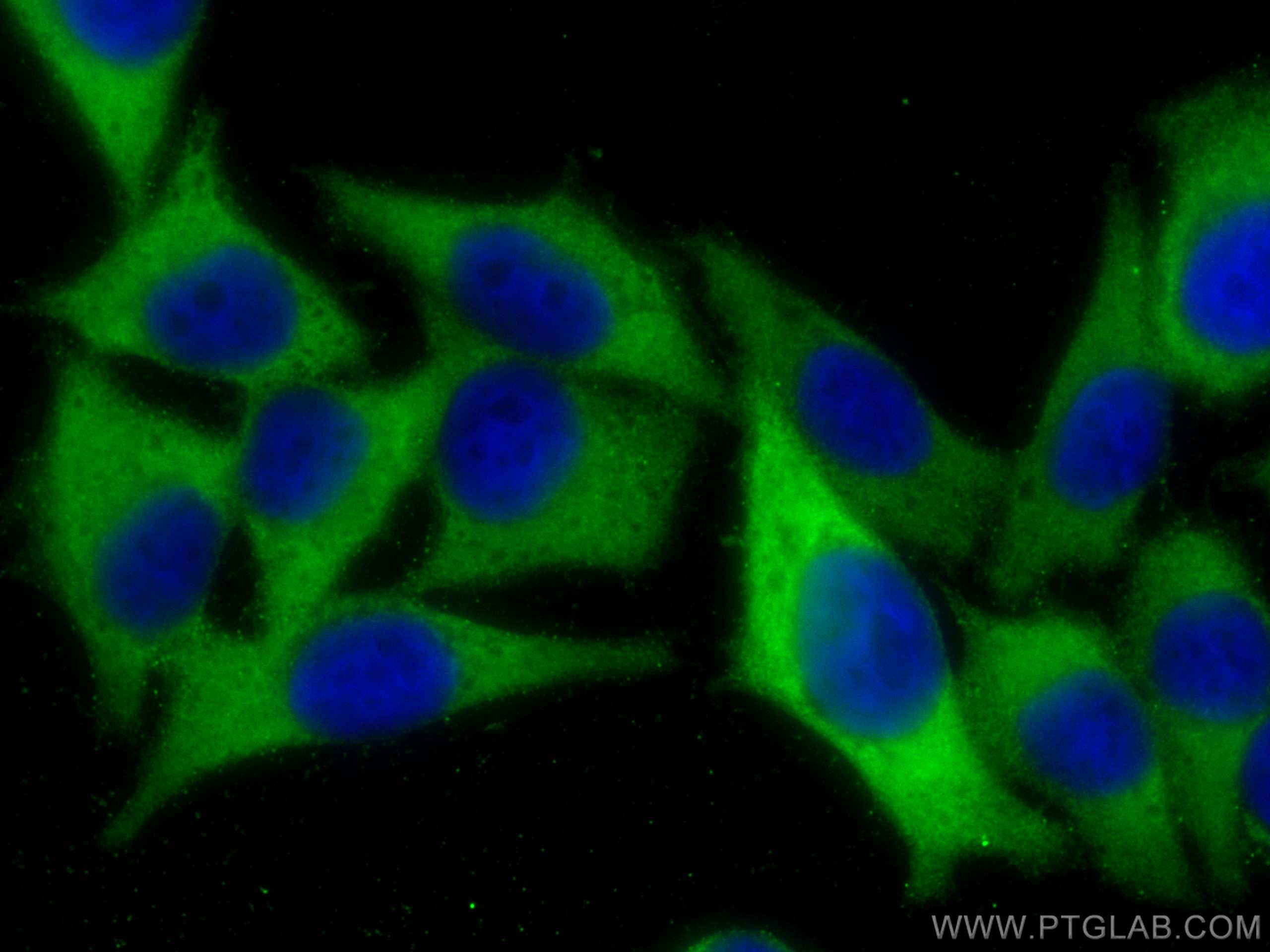Validation Data Gallery
Tested Applications
| Positive WB detected in | A375 cells, mouse brain tissue, BXPC-3 cells, HeLa cells, MDA-MB-231 cells |
| Positive IHC detected in | human skin cancer tissue Note: suggested antigen retrieval with TE buffer pH 9.0; (*) Alternatively, antigen retrieval may be performed with citrate buffer pH 6.0 |
| Positive IF/ICC detected in | A375 cells |
Recommended dilution
| Application | Dilution |
|---|---|
| Western Blot (WB) | WB : 1:1000-1:6000 |
| Immunohistochemistry (IHC) | IHC : 1:400-1:1600 |
| Immunofluorescence (IF)/ICC | IF/ICC : 1:200-1:800 |
| It is recommended that this reagent should be titrated in each testing system to obtain optimal results. | |
| Sample-dependent, Check data in validation data gallery. | |
Published Applications
| KD/KO | See 6 publications below |
| WB | See 9 publications below |
| IHC | See 2 publications below |
| IF | See 2 publications below |
Product Information
18263-1-AP targets PHLDA1 in WB, IHC, IF/ICC, ELISA applications and shows reactivity with human, mouse samples.
| Tested Reactivity | human, mouse |
| Cited Reactivity | human, mouse |
| Host / Isotype | Rabbit / IgG |
| Class | Polyclonal |
| Type | Antibody |
| Immunogen |
CatNo: Ag13125 Product name: Recombinant human PHLDA1 protein Source: e coli.-derived, PGEX-4T Tag: GST Domain: 1-259 aa of BC018929 Sequence: MLESSGCKALKEGVLEKRSDGLLQLWKKKCCILTEEGLLLIPPKQLQHQQQQQQQQQQQQQQPGQGPAEPSQPSGPAVASLEPPVKLKELHFSNMKTVDCVERKGKYMYFTVVMAEGKEIDFRCPQDQGWNAEITLQMVQYKNRQAILAVKSTRQKQQHLVQQQPPSQPQPQPQLQPQPQPQPQPQPQPQSQPQPQPQPKPQPQQLHPYPHPHPHPHSHPHSHPHPHPHPHPHQIPHPHPQPHSQPHGHRLLRSTSNSA 相同性解析による交差性が予測される生物種 |
| Full Name | pleckstrin homology-like domain, family A, member 1 |
| Calculated molecular weight | 45 kDa |
| Observed molecular weight | 40-45 kDa |
| GenBank accession number | BC018929 |
| Gene Symbol | PHLDA1 |
| Gene ID (NCBI) | 22822 |
| RRID | AB_2163284 |
| Conjugate | Unconjugated |
| Form | |
| Form | Liquid |
| Purification Method | Antigen affinity purification |
| UNIPROT ID | Q8WV24 |
| Storage Buffer | PBS with 0.02% sodium azide and 50% glycerol{{ptg:BufferTemp}}7.3 |
| Storage Conditions | Store at -20°C. Stable for one year after shipment. Aliquoting is unnecessary for -20oC storage. |
Background Information
PHLDA1, also known as PHRIP and TDAG51, is a multifunctional protein involved in various biological processes. It can induce apoptosis in various cell types, including T cells, hippocampal cells, endothelial cells, melanoma cells, and mouse embryonic fibroblasts(PMID: 30207029). PHLDA1 plays a role in inhibiting growth factor signaling and has been implicated in tumor suppression through its ability to repress Akt activity by binding to phosphatidylinositol (PIP) lipids(PMID: 36142223).
Protocols
| Product Specific Protocols | |
|---|---|
| IF protocol for PHLDA1 antibody 18263-1-AP | Download protocol |
| IHC protocol for PHLDA1 antibody 18263-1-AP | Download protocol |
| WB protocol for PHLDA1 antibody 18263-1-AP | Download protocol |
| Standard Protocols | |
|---|---|
| Click here to view our Standard Protocols |
Publications
| Species | Application | Title |
|---|---|---|
Brain Behav Immun PHLDA1 promotes microglia-mediated neuroinflammation via regulating K63-linked ubiquitination of TRAF6.
| ||
Inflammation Multiple Machine Learning Identifies Key Gene PHLDA1 Suppressing NAFLD Progression | ||
Life Sci PHLDA1 is a new therapeutic target of oxidative stress and ischemia reperfusion-induced myocardial injury.
| ||
Inflammation TDAG51-Deficiency Podocytes are Protected from High-Glucose-Induced Damage Through Nrf2 Activation via the AKT-GSK-3β Pathway.
| ||
Hum Exp Toxicol Loss of PHLDA1 has a protective role in OGD/R-injured neurons via regulation of the GSK-3β/Nrf2 pathway.
| ||
Neuroreport Egr1 promotes Nlrc4-dependent neuronal pyroptosis through phlda1 in an in-vitro model of intracerebral hemorrhage
|




